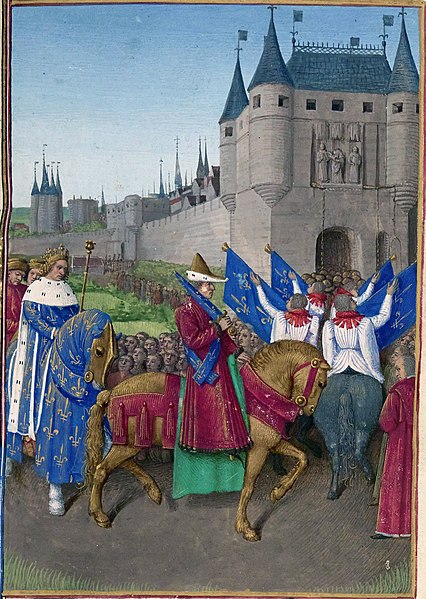Jean Fouquet was a French painter and miniaturist. A master of panel painting and manuscript illumination, and the apparent inventor of the portrait miniature, he is considered one of the most important painters from the period between the late Gothic and early Renaissance. He was the first French artist to travel to Italy and experience first-hand the early Italian Renaissance.
The burial of Étienne Chevalier
Charles VII as one of the three magi
Entry of Charles V in Paris on 2 August 1358, Grandes Chroniques de France (1455–1460)
Marriage of Charles IV and Marie of Luxembourg
A portrait miniature is a miniature portrait painting, usually executed in gouache, watercolor, or enamel. Portrait miniatures developed out of the techniques of the miniatures in illuminated manuscripts, and were popular among 16th-century elites, mainly in England and France, and spread across the rest of Europe from the middle of the 18th century, remaining highly popular until the development of daguerreotypes and photography in the mid-19th century. They were usually intimate gifts given within the family, or by hopeful males in courtship, but some rulers, such as James I of England, gave large numbers as diplomatic or political gifts. They were especially likely to be painted when a family member was going to be absent for significant periods, whether a husband or son going to war or emigrating, or a daughter getting married.
A display case with 18th-century portrait miniatures at the National Museum in Warsaw.
Portrait Miniature of Margaret Roper by Hans Holbein the Younger, c. 1535–36
Christian Horneman's miniature portrait of Ludwig van Beethoven (1802).
The future Duke of Wellington in 1808, by Richard Cosway.








